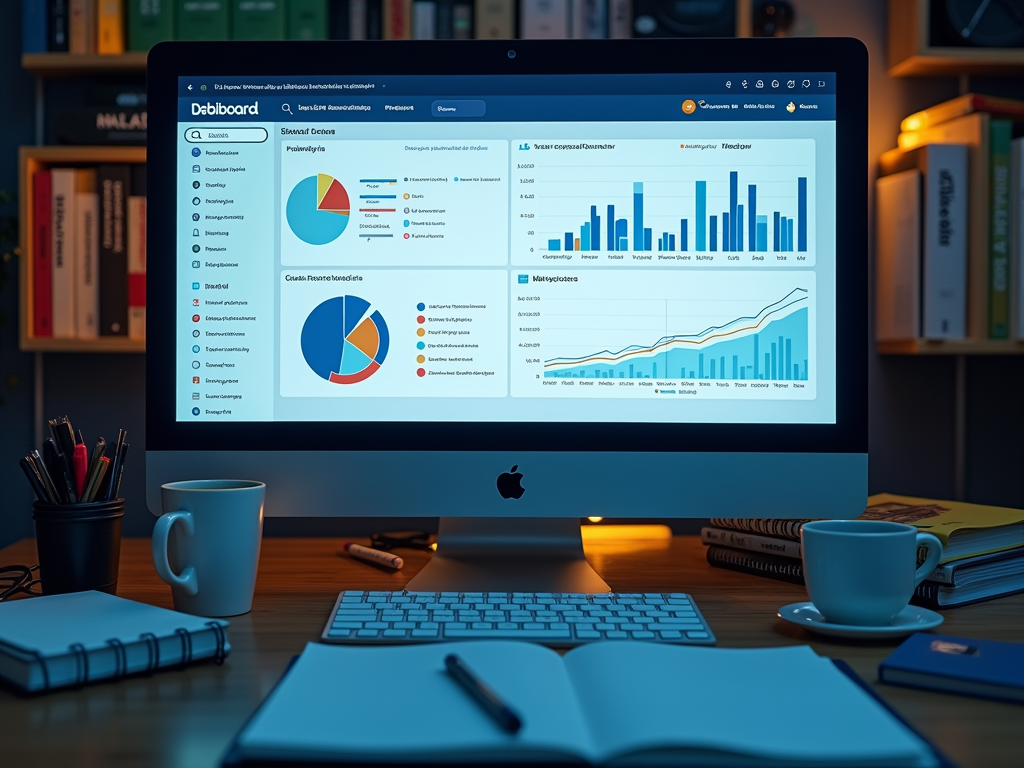Social media analytics is an invaluable tool for marketers seeking to enhance their strategies and achieve better engagement with their target audience. By effectively analyzing data derived from various social media platforms, businesses can gain insights into user behavior, preferences, and overall content performance. This article will delve into the best ways to leverage social media analytics to refine your marketing efforts, ensuring that you reach the right people with the right message, ultimately enhancing your return on investment.
Understanding Social Media Analytics

Social media analytics refers to the collection and analysis of data from social media platforms to evaluate the performance of your marketing efforts. These analytics provide important metrics such as engagement rates, reach, impressions, and audience demographics. By understanding these metrics, marketers can make informed decisions about their strategies. Key components include:
- Engagement Metrics: Likes, shares, comments, and mentions that indicate how users interact with your content.
- Reach and Impressions: Reach refers to the number of unique users who see your content, while impressions count the total views, including repeat ones.
- Demographic Insights: Data about the age, gender, location, and interests of your audience for targeted marketing.
- Traffic Sources: Understanding where your audience comes from, whether directly, via search engines, or social shares.
- Content Performance: Analyzing which types of posts (videos, images, links) perform best in terms of engagement and conversions.
Setting Clear Goals for Your Analytics

Before diving into data analysis, it’s essential to set clear goals for what you want to achieve with your social media marketing. These goals can vary widely based on the nature of your business and your audience. Establishing SMART goals—Specific, Measurable, Achievable, Relevant, and Time-bound—can significantly streamline your analysis. Here are some examples of typical goals marketers might set:
- Increase brand awareness by growing social media following by 20% in six months.
- Improve engagement by boosting average likes and shares by 30% over the next quarter.
- Enhance website traffic through social media referrals by 50% within a specific timeframe.
- Generating 15% more leads through social media platforms over the next three months.
- Increase customer retention by fostering community engagement and feedback via social media interactions.
Choosing the Right Metrics to Analyze
Once your goals are set, you must identify which metrics are most closely aligned with those objectives. Analyzing the right metrics ensures you focus on data that genuinely impacts your strategy. Key metrics include conversion rates, which track how many users complete a desired action (like making a purchase), and click-through rates (CTR), which measure how often users click on your content. Consider these essential metrics:
- Conversion Rates: Understanding how social media drives sales or leads is critical for ROI.
- Traffic Sources: This metric reveals which social platforms are the most effective at driving traffic to your site.
- Post Engagement Rate: Calculate the total engagement divided by the reach to determine content resonance.
- Audience Growth Rate: Measure how fast your audience is growing over time.
- Sentiment Analysis: Gauge the public’s perception of your brand through comments and feedback.
With a solid understanding of analytics, marketers can use insights gleaned from data to refine their content strategy. This means creating posts that resonate with your audience’s interests and preferences. For instance, if analytics indicate that video content consistently garners higher engagement than static images, then pivoting to a more video-centric content approach could be beneficial. Create a strategy utilizing insights by:
- Identifying high-performing content types based on analytics to replicate their success.
- A/B testing different post formats and timings to discover what aligns best with audience engagement.
- Adjusting the posting schedule to maximize visibility, determining whether your audience is most active at specific times or days.
- Engaging with audience feedback to inform future content about what your followers want more of.
- Regularly reviewing analytics to adapt and pivot your strategy as trends and audience preferences shift.
Conclusion
Incorporating social media analytics into your marketing strategy is essential for making informed, data-driven decisions that can significantly improve engagement and overall performance. By understanding what to measure, setting clear goals, and utilizing insights for strategic refinement, marketers can more effectively connect with their audience and enhance their marketing ROI. The landscape of social media is constantly evolving, and leveraging analytics ensures that businesses stay ahead of the curve, maximizing their potential for growth and engagement.
Frequently Asked Questions
1. What are the main benefits of using social media analytics in marketing?
Social media analytics helps marketers track performance, understand audience behavior, optimize content strategies, and improve overall ROI. In essence, it provides actionable insights that guide decision-making.
2. How often should I check my social media analytics?
The frequency of checking analytics depends on your marketing goals and activity levels. A good rule of thumb is to review metrics at least weekly to stay updated and agile in your strategy.
3. Is it necessary to have advanced tools for social media analytics?
While basic analytics are available on most social media platforms, using advanced tools can offer deeper insights, custom reports, and cross-platform comparisons, enhancing your overall analysis.
4. How can I increase engagement based on analytics?
Use insights to tailor your content, optimize posting times, engage with followers, and replicate successful posts while continuously testing and learning what resonates with your audience.
5. What should I do if my social media analytics show poor performance?
Analyze the metrics to pinpoint the efficiency of your content, test new approaches, optimize posting times, or even refine your target audience. Sometimes, experimenting and learning from failures leads to improved performance.





